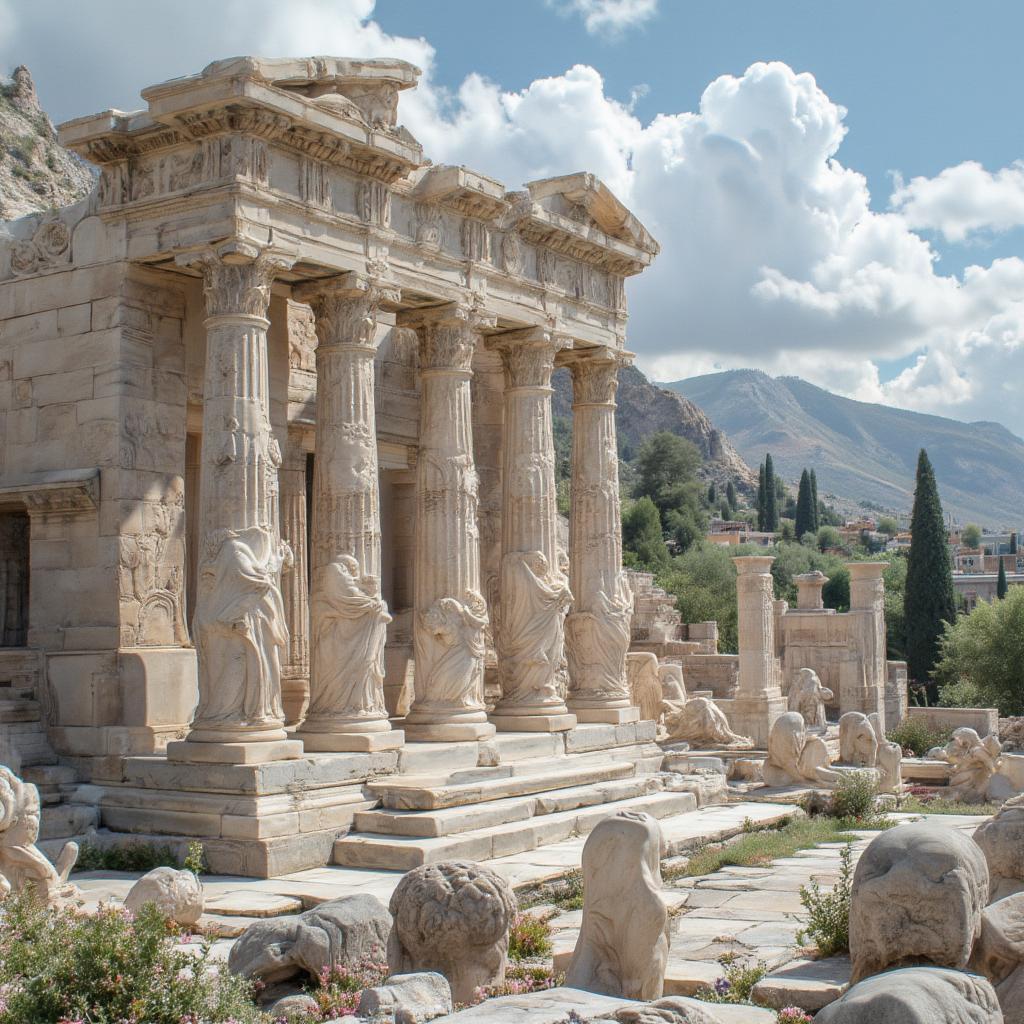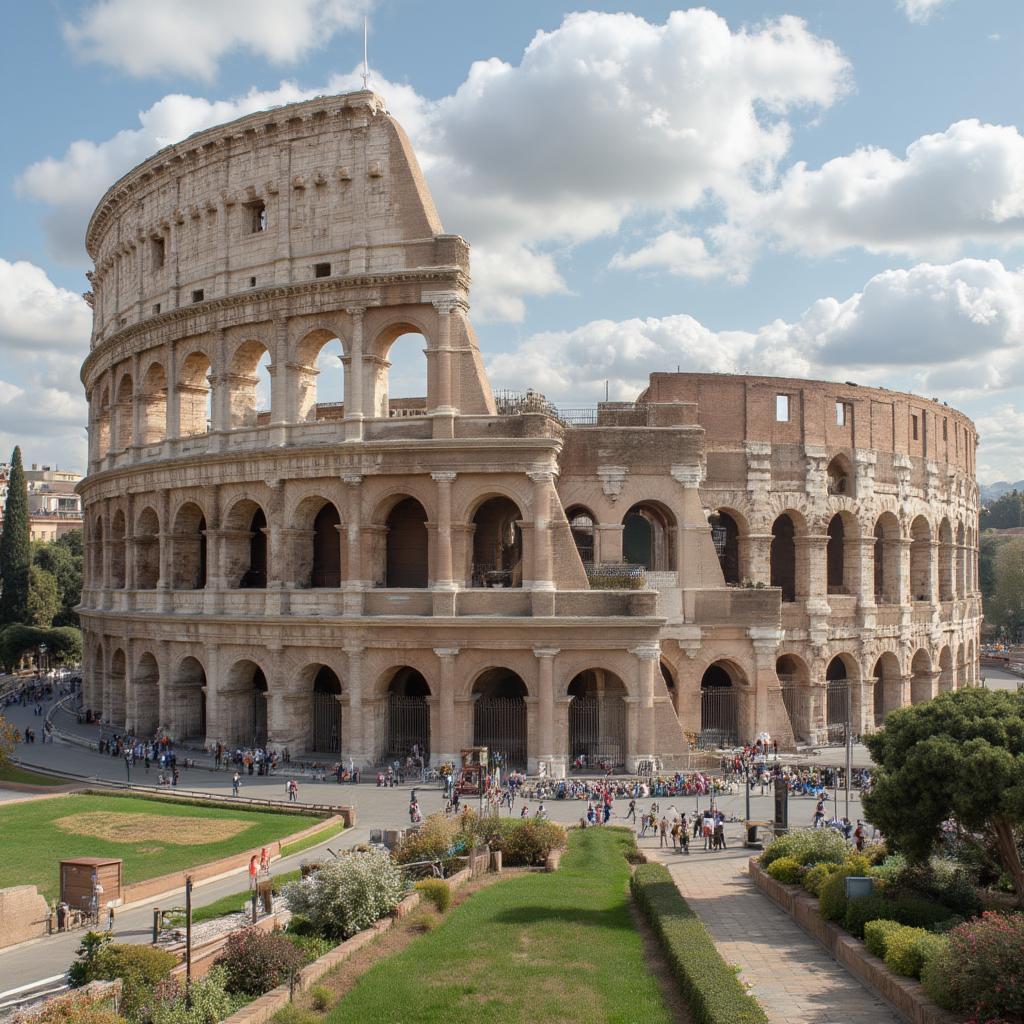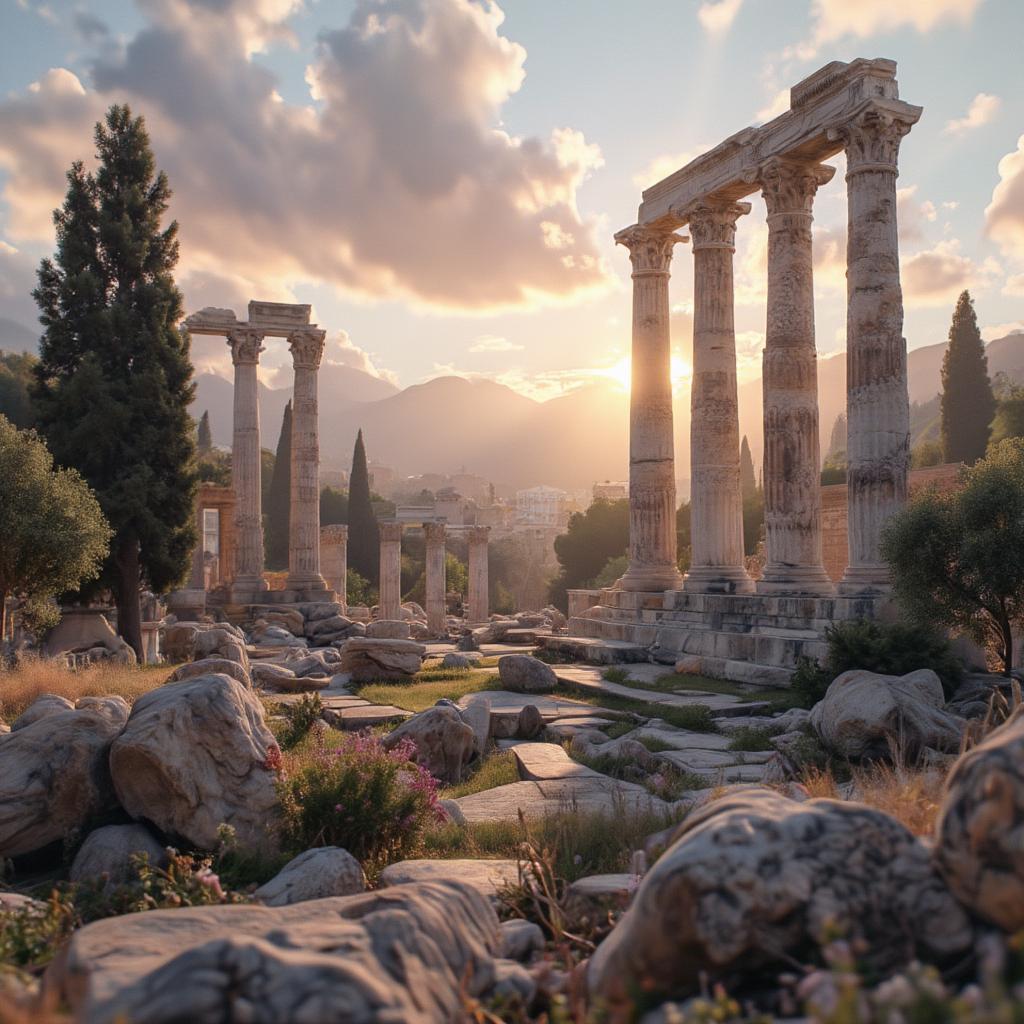The Temple of Artemis Destroyed: Unraveling History’s Loss

The Temple of Artemis, one of the Seven Wonders of the Ancient World, stood as a testament to human ingenuity and devotion. However, its existence was not eternal. The story of the temple of artemis destroyed is a complex tale of natural disasters, human conflict, and the relentless passage of time. Understanding this destruction is crucial to appreciating the enduring legacy of this magnificent structure.
The Grandeur Before the Fall
Before we delve into its destruction, let’s revisit the splendor of the Temple of Artemis. Situated in Ephesus (present-day Turkey), this temple was dedicated to the Greek goddess Artemis, the deity of the hunt, wilderness, wild animals, the Moon, and chastity. Constructed primarily during the 6th century BCE, it was an architectural marvel boasting over 127 columns, many of which were adorned with intricate carvings. This monumental temple was far more than just a place of worship; it was a center of commerce, art, and social life, a shining beacon of culture in the ancient world. To get a clearer picture, you can explore more on temple of artemis at ephesus facts.
How Was the Temple of Artemis Destroyed?
The destruction of the Temple of Artemis wasn’t a single event but rather a series of unfortunate incidents. The first major blow came around 356 BCE, when an arsonist named Herostratus set the wooden roof ablaze in his twisted pursuit of fame, forever etching his name into infamy. Ironically, his act of destruction would do just that, despite the Ephesians’ attempt to erase his memory. This fire destroyed much of the original temple, which was then rebuilt even grander. This reconstruction took several decades and involved the use of even more luxurious materials and architectural styles.
Reconstruction and Subsequent Collapse
The rebuilt temple thrived for several centuries, becoming an even more significant landmark within the region. But nature, as it often does, had other plans. Several centuries later, sometime between the 3rd and 5th centuries CE, the temple was abandoned. This abandonment came as a result of a combination of factors, including the waning influence of the Greek Pantheon with the rise of Christianity, as well as the gradual decline of Ephesus as a major port city due to silting of the harbor. The exact details around this period are somewhat fragmented, with some evidence suggesting that a large scale earthquake could have contributed to its downfall. While it was never formally destroyed again, the abandonment and loss of maintenance contributed to the collapse of the remaining structure through disrepair.
“The Temple of Artemis stood not just as a religious site but also as an emblem of wealth and architectural prowess. Its destruction serves as a poignant reminder of the fragility of even the most magnificent human endeavors,” states Dr. Eleanor Vance, an expert in ancient Greek architecture.
The Legacy of Ruin
While much of the temple was destroyed, its legacy continues to fascinate historians, archaeologists, and enthusiasts worldwide. The ruins provide invaluable insights into the architectural prowess of the ancient world. We can still marvel at the ingenuity of its construction through scattered remnants, despite it being largely gone today. You can delve deeper into its remnants by exploring temple of artemis today.
What Remains of the Temple Today?
What you see today at the site of the Temple of Artemis are sparse remains: a few foundation stones, scattered architectural fragments, and one solitary reconstructed column. This poignant scene speaks volumes about the once-great structure and its dramatic downfall. While it may be disappointing to see so little of such a wonder, these remnants are incredibly valuable in allowing us to piece together the story of the temple. You can understand more on what’s left by diving into facts about the temple of artemis.
Why is the Temple of Artemis Important?
The temple holds significant importance as not only a symbol of the ancient Greek world’s religious and cultural values, but also as one of the famed Seven Wonders of the Ancient World. This placement alone speaks volumes about its influence on the world’s understanding of the wonders of ancient civilization. Its sheer scale and opulence made it a landmark that was admired for generations. Its story continues to educate us about the ancient world, its beliefs, its architectural accomplishments and the factors that caused its demise.
“The destruction of the Temple of Artemis, though tragic, allows us to appreciate the vulnerability of human creations and how even the grandest of structures can be impacted by time, human actions, and natural events,” explains Professor Adrian Sterling, a specialist in Ancient Roman history.
The Destruction’s Lessons and its Aftermath
The fate of the Temple of Artemis provides us with valuable lessons. It highlights the ephemeral nature of human creations and underscores the importance of preserving cultural heritage. It also tells a story about the conflicts and changes that have reshaped the world over centuries. The temple of artemis destroyed is a stark reminder of how structures, no matter how impressive, are ultimately vulnerable to human actions and natural forces. You can explore more about it’s history within temple of artemis at ephesus.
Was there more than one destruction?
The temple’s history is marked by more than one destructive event. There was the initial fire in 356 BCE and later on, the gradual collapse from neglect and potential earthquakes. These events offer layers to the narrative, showing that the demise of this grand structure was not just a singular, unfortunate event but a series of challenges over time. This complexity is what makes its story all the more compelling and deserving of continued study.
Did the Temple have other problems?
Besides its eventual destruction, the Temple also faced issues such as a silting harbor, which led to Ephesus’ decline and reduced the need for the temple. The rise of Christianity and the gradual abandonment of pagan beliefs also diminished the Temple’s importance, further contributing to its eventual abandonment. These factors combine to give us a much clearer view of why it is no longer around.

“The temple’s destruction prompts us to reflect on how cultural and religious shifts impact the built environment. It’s a lesson in the impermanence of human achievements and the importance of cherishing our cultural legacy,” asserts Dr. Isabella Ramirez, a cultural heritage expert.
Exploring Further: The Temple’s Wider Impact
The story of the temple of artemis destroyed is not isolated. It’s part of a larger narrative that involves many other great monuments of the ancient world. Understanding its history can shed light on the broader historical context of the times. The temple’s grandeur, its destruction, and its eventual decline provide a powerful commentary on the rise and fall of civilizations and the ever-changing nature of human history, it’s a clear reminder of the impact that ancient wonders have had on our current day and understanding of civilization. For an even broader perspective you should explore temple of artemis 7 wonders the ancient world.
What is the ongoing research about the temple?
Archaeological research continues at the site of the Temple of Artemis, with scholars dedicated to uncovering new insights. Each discovery helps refine our understanding of the temple, its construction, and its role within the ancient world. New finds help paint an ever more comprehensive picture, providing valuable and tangible pieces to our understanding of what the temple once was.
What is the lasting significance of the temple?
Despite its destruction, the Temple of Artemis remains a significant touchstone for historians and travelers alike. It is a potent symbol of the past, encouraging us to learn from the successes and failures of those who came before us. It is a symbol of human ambition, religious belief, and the transience of even the most spectacular creations. Even though it’s destroyed, it will continue to have a lasting impact on our understanding of antiquity.
Conclusion: Remembering the Lost Wonder
The temple of artemis destroyed is a chapter in human history that encapsulates both tragedy and triumph. While the physical structure is mostly gone, its story persists, reminding us of the glory of ancient civilizations and the fragility of human endeavors. The narrative of its rise and fall, including the fire set by Herostratus, and its eventual abandonment due to social change and potential natural disasters, all form part of its powerful and important story. The exploration of its ruins and the ongoing research at the site ensure that its story will continue to resonate, inspiring and educating generations to come. Through this loss, we come to learn, appreciate, and understand more about our world and its history.




